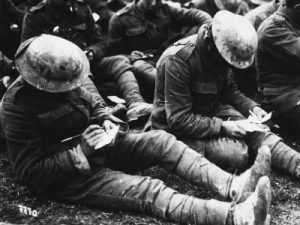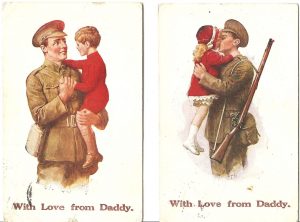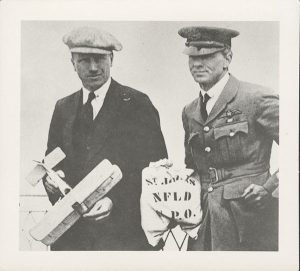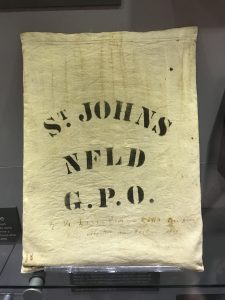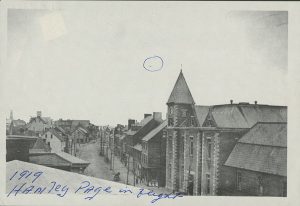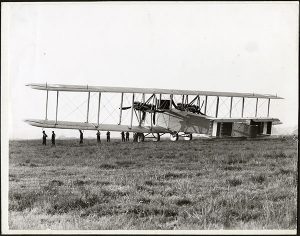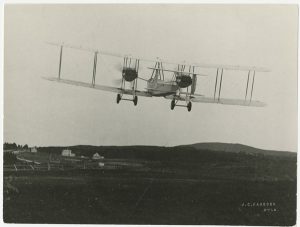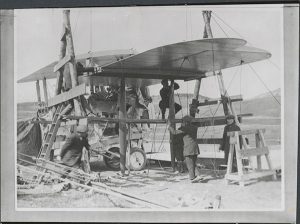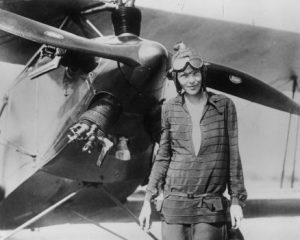Archival Moment
July 1, 1916
 In the wake of the death and carnage of Beaumont Hamel on July 1, 1916 many mothers in Newfoundland and Labrador clung to the hope that their sons did not die but had been taken as Prisoners of War (POW). They were desperate to have any shred of evidence. Mothers, like Catherine Andrews of 249 Water Street, St. John’s wrote letters to government officials urging them to do all that they could to find their sons. She had three sons that signed up to fight for ‘King and Country’. The government typically responded:
In the wake of the death and carnage of Beaumont Hamel on July 1, 1916 many mothers in Newfoundland and Labrador clung to the hope that their sons did not die but had been taken as Prisoners of War (POW). They were desperate to have any shred of evidence. Mothers, like Catherine Andrews of 249 Water Street, St. John’s wrote letters to government officials urging them to do all that they could to find their sons. She had three sons that signed up to fight for ‘King and Country’. The government typically responded:
Dear Madam,
For some time past the Imperial Government have been making enquiries in relation to those men of the First Newfoundland Regiment who have been reported missing since the action of the 1st July. I very much regret to state, however, that from the correspondence which has taken place …. it is evident that none of them are Prisoners of War in Germany, and the authorities are, therefore, reluctantly forced to the conclusion that all these gallant men [including] one of whom was very dear to you, were killed in that fateful action on the 1st of July.
I desire to express to you on behalf of the Government, as well as for myself, the sincerest sympathy in this time of sorrow. We feel the loss of our loved ones, but it will, no doubt, be some consolation to you to think that he – for whom you now mourn- willingly answered the call of King and Country, did his part nobly, and fell, facing the foe, in defence of the principles of Righteousness, Truth and Liberty. Though he has laid down the earthly weapons of warfare, he now wears the Soldier’s Crown of Victory and his name will be inscribed upon the Glorious Roll of Honor, and be held in fragrant memory by all his fellow countrymen.
When the victory is won, and Peace again reigns upon the earth, it will be a comforting thought to you that in this glorious achievement he bore no small part.
Like many in Newfoundland, this determined mother, Catherine Andrews, could not comprehend the staggering toll of Beaumont Hamel. Almost a year later, she contacted government officials, requesting that they publish a photograph of her son, in hopes that someone might recognize him:
The letter, dated 21 May 1917, was addressed:
“ To whom it may concern. [I] don’t know if this is the correct address…. I am sending my darling son’s photo to you to see if it will be of any use to you as there are now hopes of being able to trace our missing men. You will see by the photo that he was posted as missing on July 1st 1916 and later I was sent official notice that he was believed killed in action, but there are many of us who believe they are alive. If you have any proof of my son’s death will you kindly send such to me, his broken-hearted mother.
I have received some letters we sent him stamped with the two words: “Casualty verified”. Please explain how that can be possible and, if true, do please send me anything you may have in personal property or belongings of his… I shall be very thankful for any news of him or his affairs. I have one [soldier] son now at Wandsworth [Hospital] and another still in France with the Canadian Royal Engineers.
Very respectfully,
Mrs. Catherine Andrews
When informed that no information was available about her son’s death, Mrs. Andrews wrote the governor:
To His Excellency Governor Davidson
Sir,
As the mother of one of our fallen heroes I wish to see you on a very important matter. Will you kindly arrange for me to see you at the very earliest possible date and if that is not possible may I see Lady Davidson instead.
The private secretary to the Governor contacted the Regimental Record Office; unfortunately, Joe Andrews, like so many other Newfoundland soldiers was missing, leaving no personal effects, no identification discs, no grave, no memory of his last words. Sometimes the families found out the circumstances of their son’s death several years later.
On July 1 take some time to visit our National War Memorial, St. John’s or the War Memorial in your home town. Remember, Catherine Andrews and the many other mothers who lost their sons.
Recommended Archival Collection: Search individual soldier’s files here: https://www.therooms.ca/thegreatwar/in-depth/military-service-files/introduction
 Join us once again on July 1st for free admission in observation of Memorial Day at The Rooms.
Join us once again on July 1st for free admission in observation of Memorial Day at The Rooms.
12-3 pm: Meet descendants of veterans of the First World War in the Royal Newfoundland Regiment Gallery
12-5 pm: Visit the Archives to see our copy of The Newfoundland Book of Remembrance honouring victims from the First and Second World Wars
12-5 pm: Bring in your family to make your own flowers of remembrance with the staff from Admiralty House Museum
1 pm: Instant Choir by Growing the Voices: Festival 500 Bring a non-perishable food item for the Community Food Sharing Association.
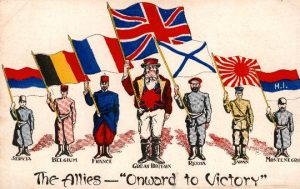 2:30 pm: Film Screening: They Shall Not Grow Old Join us for a special screening of “They Shall Not Grow Old”. Peter Jackson’s film shows original footage from the First World War in a brand new light with modern production techniques. $10 per person, 10% discount for Rooms Members.
2:30 pm: Film Screening: They Shall Not Grow Old Join us for a special screening of “They Shall Not Grow Old”. Peter Jackson’s film shows original footage from the First World War in a brand new light with modern production techniques. $10 per person, 10% discount for Rooms Members.

